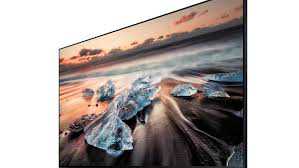You don't need four times as many pixels as 4K. But maybe you want them anyway.

Ready or not, the first 8K TV widely available to the public will go on sale this fall.
The Q900 will be Samsung's best QLED TV for 2018. It's not quite The Wall, but it's still huge in every way. The Q900's 85-inch screen is packed with more than 33 million pixels, four times the resolution of conventional 4K TVs. I also expect a huge price -- my best guess is coincidentally $8K -- but Samsung won't release pricing information until the TV goes on sale in October.
The appeal of 8K, according to Samsung, is that with ever-larger screen sizes you'll need higher resolutions to appreciate them. Whether 8K TVs actually look any sharper than 4K TVs, however, remains to be seen. Even at screen sizes this vast, all those pixels might be so much overkill.
As we've explained many times with 4K TVs, there's a point of diminishing returns when it comes to resolution. The human eye can only see so much detail, and extra pixels beyond what you can discern are basically wasted. To get anything out of higher resolutions and their proportionally tinier pixels, you need to sit closer, get a bigger TV, or both.
What is an 8K TV and should I buy one?
Plenty of sources exist in 4K resolution today, including Netflix, Amazon, YouTube, Vudu and 4K Blu-ray discs, but there are basically no 8K movies or TV shows available right now. The exception is a few YouTube videos, but Samsung couldn't confirm by press time that the Q900 could play them. For the vast majority of stuff you'll watch, the Q900 has to rely on upscaling standard HD and 4K content to fill its higher pixel count.
Expanding upon the Q9S it showed at CES, featured in the video below, Samsung says it has completely redesigned the scaling on the Q900 for 8K. It uses a new 8K Quantum processor and artificial intelligence to improve texture, smooth jagged edges and reduce noise and blurring. "A database analyses millions of sets of low and high resolution content and uses machine learning to develop algorithms" used for upscaling, Samsung says, and it can update the TV over time with improved formulas.
That sounds pretty cool, but if the past is any indication, upscaled 4K or 1080p will still look worse than native 8K content. Assuming you can tell the difference.
Based on the math of human visual acuity, you'll need to sit really close to an 85-inch 8K screen to get any benefit of the extra resolution. Carlton Bale's superb home theater calculator, for example, says you'll need to sit 3 feet or closer (to a screen that's more than 7 feet diagonal) to see all the detail of 8K, and 5 feet or closer to see the full benefit of 4K. In other words, from further than 5 feet away you won't be able to see any benefit of an 8K TV compared to a 4K TV.
Having not tested Samsung's 85-inch 8K TV next to one with 4K resolution, I can't say for sure whether that's true. But based on past comparisons of lower resolution 1080p versus 4K TVs, I expect any increase in sharpness to be minor at best.
Source: https://www.cnet.com
Previous Story
- Samsung Galaxy Note 9 Review – It’s Almost...
- Samsung is making its own smart speaker
- What to know about Samsung's new Note 9
- Galaxy Note 9 Last-Minute Rumors: Release Date, Specs...
- Samsung unveils its latest smartwatch — the Galaxy...
- Even the Galaxy Note 9’s marketing materials are...
- Samsung Suddenly 'Confirms' Massive Galaxy Note 9 Upgrade
- Samsung Claws Back Lead in Indian Smartphone Market